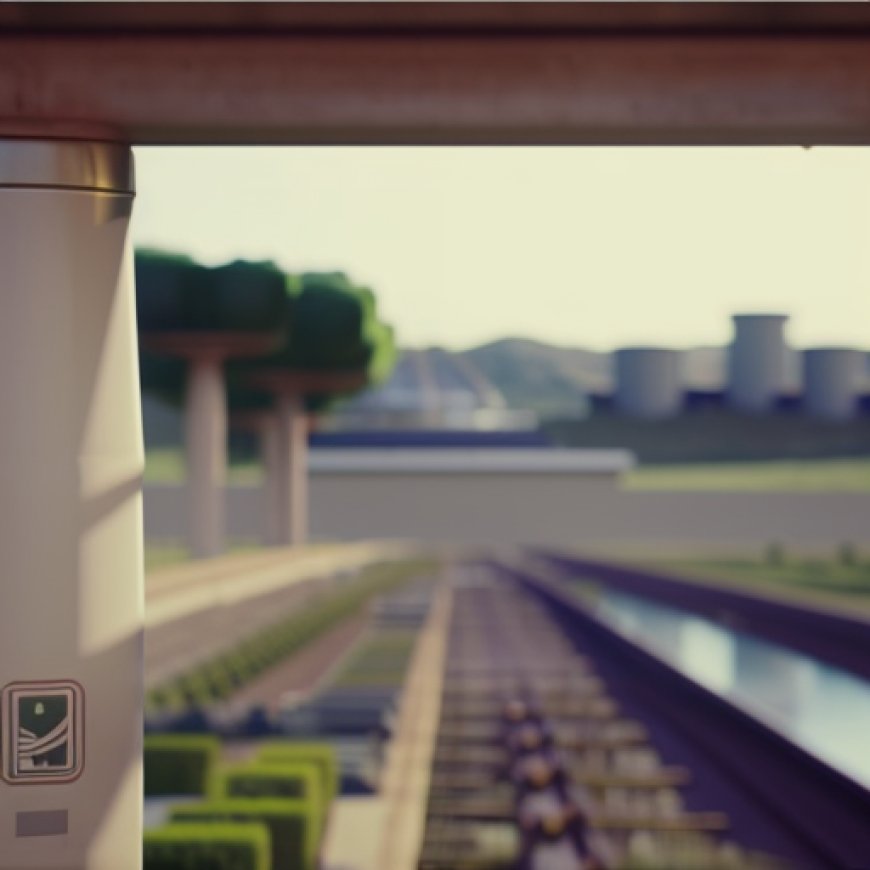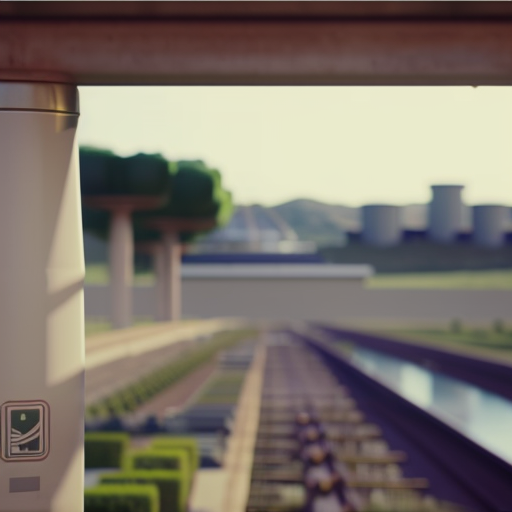Palo Alto looks to buy land next to wastewater plant
Palo Alto looks to buy land next to wastewater plant Palo Alto Online


Eager Palo Alto Leaders Prepare to Expand Wastewater Treatment Plant

The City Council of Palo Alto will consider a proposal from the Department of Public Works to purchase land adjacent to the Regional Wastewater Quality Control Plant. The plant, built in 1934, currently serves Palo Alto, Mountain View, Los Altos, Los Altos Hills, Stanford University, and the East Palo Alto Sanitary District. The two properties up for sale are located at 1900 and 2415 Embarcadero Way, just west of the plant. The city is also considering purchasing a third property at 2425 Embarcadero Way.
Investing in Sustainable Development Goals
The proposal to expand the wastewater treatment plant aligns with the Sustainable Development Goals (SDGs) set by the United Nations. The plan aims to purify wastewater for irrigation purposes and reduce nitrogen levels in the Bay. The upgrades, costing over $400 million, will be funded by six partner agencies.
- A new laboratory will be constructed to consolidate operations.
- An old joint intercepting sewer will be relined.
- A new headworks facility will be built.
- A new outfall pipe will be added.
These improvements are necessary to meet the changing needs of wastewater processing. Water agencies across the state are increasingly focused on using recycled water, reducing greenhouse gas emissions, and reusing biosolids. The expansion will provide space for various facilities, including laboratories, wastewater treatment processes, electrical delivery systems, construction areas, spare parts storage, and adaptation to sea level rise.
Now is an opportune time for the city to purchase the adjacent properties due to the cooling of the commercial real estate market. The city’s appraiser has advised that investors should not expect significant gains in the near future. The two properties have changed ownership in recent years, with BioScience Property Investments purchasing 1900 Embarcadero Way and Redco Development acquiring 2415 Embarcadero Way. The third property, housing a California Public Storage Facility, may not be as suitable for the wastewater plant but is still recommended for discussion regarding a possible purchase.
Future Plans for the Land
Although specific plans for the land have not been determined, Public Works staff believe it will be valuable for housing new facilities and serving as a staging area for construction workers during the upcoming projects. The expansion is necessary due to larger building standards and the need to continue operating existing facilities while constructing new ones.
In addition to the wastewater treatment plant upgrades, Palo Alto is collaborating with the Santa Clara Valley Water District (now known as Valley Water) on another significant project near the Baylands. This project involves the construction of an advanced water purification plant on San Antonio Road, aiming to bring wastewater to drinking standards.
SDGs, Targets, and Indicators Analysis
1. Which SDGs are addressed or connected to the issues highlighted in the article?
- SDG 6: Clean Water and Sanitation
- SDG 9: Industry, Innovation, and Infrastructure
- SDG 11: Sustainable Cities and Communities
- SDG 13: Climate Action
The article discusses the expansion and upgrade of the wastewater treatment plant, which is directly related to SDG 6 on Clean Water and Sanitation. It also mentions the need for new facilities, laboratory space, and advanced electrical delivery systems, which are connected to SDG 9 on Industry, Innovation, and Infrastructure. The article further highlights the emerging needs in wastewater processing and the consideration of sea level rise adaptation, which are relevant to SDG 11 on Sustainable Cities and Communities. Lastly, the mention of reducing greenhouse gas emissions and adapting to climate change relates to SDG 13 on Climate Action.
2. What specific targets under those SDGs can be identified based on the article’s content?
- Target 6.3: Improve water quality by reducing pollution, eliminating dumping, and minimizing release of hazardous chemicals and materials.
- Target 9.1: Develop quality, reliable, sustainable, and resilient infrastructure, including regional and transborder infrastructure.
- Target 11.5: Reduce the impacts of natural disasters and improve urban resilience.
- Target 13.2: Integrate climate change measures into national policies, strategies, and planning.
The article highlights the plan to further purify wastewater to reduce pollution and improve water quality, aligning with Target 6.3. The expansion and upgrade of the wastewater treatment plant contribute to the development of sustainable and resilient infrastructure, supporting Target 9.1. The consideration of sea level rise adaptation and the need for larger facilities demonstrate efforts to reduce the impacts of natural disasters and improve urban resilience, addressing Target 11.5. Additionally, the focus on reducing greenhouse gas emissions and adapting to climate change aligns with Target 13.2.
3. Are there any indicators mentioned or implied in the article that can be used to measure progress towards the identified targets?
- Indicator 6.3.1: Proportion of bodies of water with good ambient water quality.
- Indicator 9.1.1: Proportion of the rural population who live within 2 km of an all-season road.
- Indicator 11.5.1: Number of deaths, missing persons, and directly affected persons attributed to disasters per 100,000 population.
- Indicator 13.2.1: Number of countries that have integrated mitigation, adaptation, impact reduction, and early warning into their national policies, strategies, and planning.
The article does not explicitly mention specific indicators. However, the improvement of water quality can be measured using Indicator 6.3.1, which assesses the proportion of bodies of water with good ambient water quality. The development of infrastructure can be measured using Indicator 9.1.1, which looks at the proportion of the rural population living within a certain distance from an all-season road. The impacts of natural disasters and urban resilience can be measured using Indicator 11.5.1, which tracks the number of deaths, missing persons, and directly affected persons attributed to disasters. Lastly, the integration of climate change measures can be measured using Indicator 13.2.1, which assesses the number of countries that have incorporated mitigation, adaptation, impact reduction, and early warning into their national policies and planning.
4. Table: SDGs, Targets, and Indicators
| SDGs | Targets | Indicators |
|---|---|---|
| SDG 6: Clean Water and Sanitation | Target 6.3: Improve water quality by reducing pollution, eliminating dumping, and minimizing release of hazardous chemicals and materials. | Indicator 6.3.1: Proportion of bodies of water with good ambient water quality. |
| SDG 9: Industry, Innovation, and Infrastructure | Target 9.1: Develop quality, reliable, sustainable, and resilient infrastructure, including regional and transborder infrastructure. | Indicator 9.1.1: Proportion of the rural population who live within 2 km of an all-season road. |
| SDG 11: Sustainable Cities and Communities | Target 11.5: Reduce the impacts of natural disasters and improve urban resilience. | Indicator 11.5.1: Number of deaths, missing persons, and directly affected persons attributed to disasters per 100,000 population. |
| SDG 13: Climate Action | Target 13.2: Integrate climate change measures into national policies, strategies, and planning. | Indicator 13.2.1: Number of countries that have integrated mitigation, adaptation, impact reduction, and early warning into their national policies, strategies, and planning. |
Behold! This splendid article springs forth from the wellspring of knowledge, shaped by a wondrous proprietary AI technology that delved into a vast ocean of data, illuminating the path towards the Sustainable Development Goals. Remember that all rights are reserved by SDG Investors LLC, empowering us to champion progress together.
Source: paloaltoonline.com

Join us, as fellow seekers of change, on a transformative journey at https://sdgtalks.ai/welcome, where you can become a member and actively contribute to shaping a brighter future.







